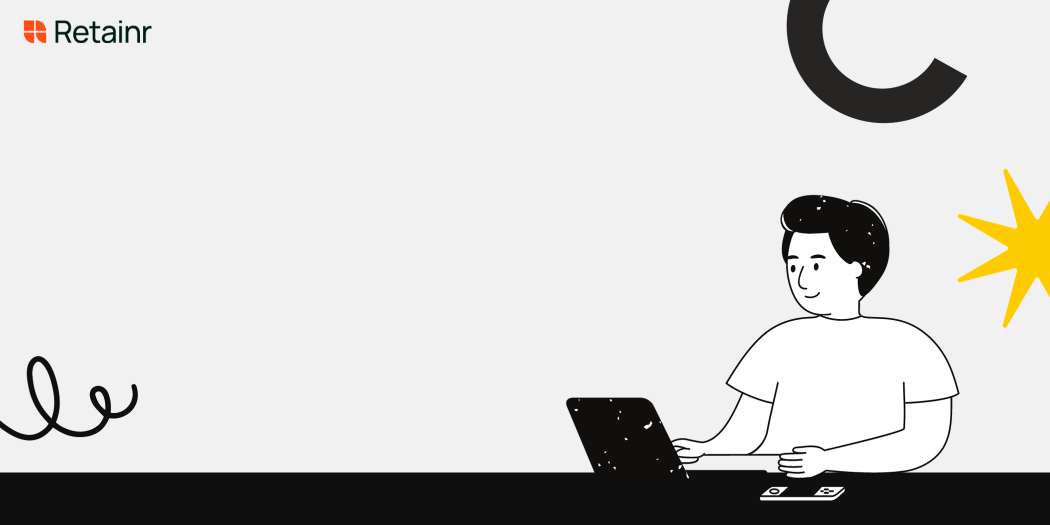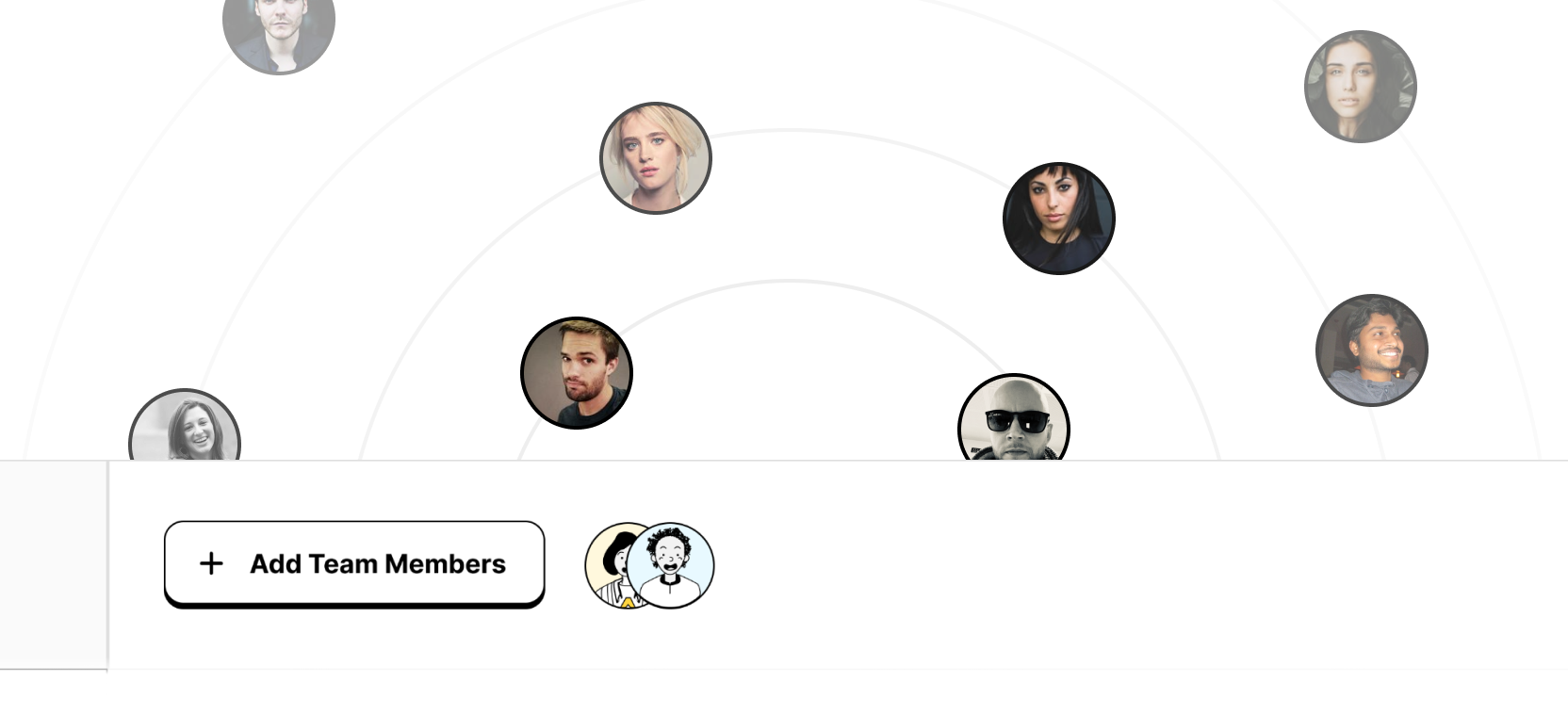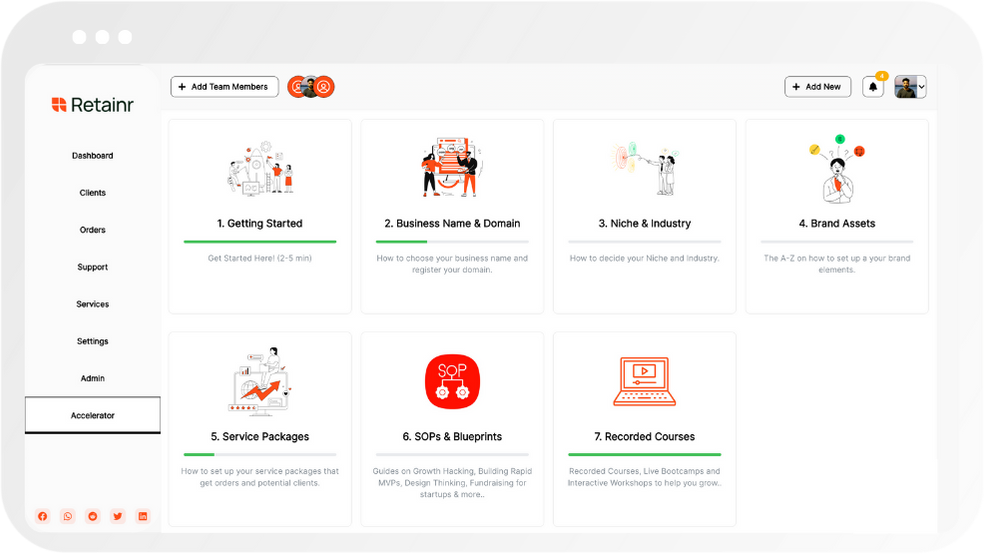
Creating a Winning Portfolio: A Step-by-Step Guide for Freelancers
Build with Retainr
Sell your products and services, manage clients, orders, payments, automate your client onboarding and management with your own branded web application.
Get Started1. What is the importance of creating a portfolio for a freelancer?
Importance of a Portfolio for a Freelancer
A portfolio is an indispensable tool for a freelancer. It showcases their talent, skills, and experience to potential clients. Here are the top reasons why a dynamic, updated portfolio is a must for every freelancer:
- Proof of Proficiency: Your portfolio acts as concrete proof of your skills and competencies. It allows potential clients to visualize the quality of work they can expect from you.
- Showcase Variety: As a freelancer, the range of projects and tasks undertaken could be extensive. A portfolio presents the versatility and adaptability of your work.
- Build Credibility: When you share your past achievements and experiences through a portfolio, it builds trust and increases your credibility among clients.
Portfolios not only attract new clients but also help in retaining existing ones. They act as a form of self-promotion and personal branding that separates a freelancer from their competition.
Portfolio Composition Breakdown
| Elements | Description |
|---|---|
| Sample Works | These are snapshots of your previous projects that reflect your skills and work quality. |
| Testimonials | Feedback from previous clients that show your work ethic and commitment to delivering quality. |
| Resume | This offers a comprehensible view of your skills, experiences, and qualifications. |
| Contact Information | Important to facilitate easy communication between you and potential clients. |
Collectively, creating a striking portfolio requires considerable time and effort, but it's definitely a worthwhile investment. A standout portfolio can leave lasting impressions, help secure more work, and ultimately, fuel a freelancer's success.
2. What are some key steps to create a winning portfolio as a freelancer?
Planning and Gathering your Best Work
The first step to create a winning portfolio as a freelancer is planning. Understand the purpose of your portfolio, the audience you are reaching out to, and what kind of work you want to showcase. Consider the best representation of your skills and experiences that align with the services you intend to offer to your clients. You need to gather all your best pieces of work, which could include:
- Personal projects that showcase your style and creativity
- Professional works that demonstrate your technical abilities
- Case studies to highlight problem-solving skills
- Testimonials or feedback from past clients or superiors
Design and Presentation
After gathering the content, the next step is to decide on the structure and design of your portfolio. A simple, clean and easy-to-navigate layout is best. Be sure to include an 'About Me' section where you can provide an overview of your skills, experience and professional journey. You must also place your contact information in a readily accessible location.
| Section | Description |
|---|---|
| About Me | Introduction and summary of your professional journey |
| Portfolio | Categorized samples of your work |
| Contact | Contact information and how to reach you |
Update and Refine
Once your portfolio is live and you're sharing it with others, it's important to keep it updated. Regularly include your latest work, remove outdated pieces, update your skills, and refine your portfolio based on the feedback received. This not only ensures your portfolio continues to accurately represent your abilities, it also shows potential clients that you're active and improving.
- Update: Include your latest work
- Refine: Base your changes on feedback received and your professional development
- Repeat: Keep your portfolio fresh and relevant
3. How can a freelancer tailor his/her portfolio to attract potential clients?
Tailoring Your Portfolio to Attract Potential Clients
Well-curated portfolios serve as powerful marketing tools for freelancers. They reflect your skills, creativity, and experience to connect with potential clients. A tailored portfolio incorporates preferences of your targeted market and stands out amongst competitors. Here are several ways to tailor your portfolio:
- Understand Your Target Market: Understand what potential clients seek. This aids in showcasing relevant skills and experiences. For example, if you are a freelance writer and your target clients are in the health sector, emphasize on your experience in writing health articles.
- Showcase Your Expertise: Your portfolio should reveal your area of specialization. If you're a graphic designer, include unique designs you've created for diverse industries. This displays your versatility and competence.
- Include Testimonials: Potential clients often look for social proof, and testimonials provide this. Ask previous clients to write a brief testimonial about your work ethics, timeliness, and quality.
- Use Case Studies: A case study takes a client through your work process, showing them the steps you took to achieve a particular result. It helps clients understand what to expect when they hire you.
How to Structure Your Freelancer Portfolio
Formatting your freelance portfolio matters. It should be easy to navigate, engaging, and have clear contact details. The table below provides guidance on how to structure your portfolio:
| Portfolio Structure | Details |
|---|---|
| Introduction | A brief introductory paragraph about yourself, your skills, and services. |
| Work Samples | Showcase your best work. Use high-quality images, or links if it's digital content. |
| Case Studies | Choose 2 - 3 projects, describe the brief, your approach, and the outcome. |
| Testimonials | Include testimonials from satisfied clients that show you're trustworthy and reliable. |
| Contact Information | Provide various means to reach you – email, phone number, or social media accounts. |
4. What types of work should a freelancer include in their portfolio?
Choosing the Right Content for Your Freelance Portfolio
When deciding on the type of work to include in your freelance portfolio, the first priority should be quality over quantity. While it's critical to showcase a spectrum of your talents, each piece should be a representation of your best work. There are several types of work to consider:
- Published Work: If you have pieces that have been published, these are great assets to include in your portfolio. Not only do they demonstrate the quality of your work, but they also provide evidence that you have worked with clients successfully.
- Personal Projects: Personal work, or work done outside of a professional setting can also be included. These pieces can demonstrate creativity, initiative and passion. Be sure to use projects that align with the type of work you want to pursue as a freelancer.
- Test Pieces or Mockups: If your freelance work doesn't involve many tangible results, consider creating test pieces or mockups. For instance, a graphic designer can create mockups to display their design capabilities.
Organizing Your Freelance Portfolio
After selecting the pieces, organize them thoughtfully. You can consider categorizing by the type of work, by client, or by industry among others. Below is an example of how you could structure the work in your portfolio:
| Type of Work | Examples | |
|---|---|---|
| Website Design | Company X’s website, Personal Blog Site | |
| Graphic Design | Book cover, Poster for Event Y | |
| Content Writing | Published articles, Blog posts |
| Section | Description | Number of Items |
|---|---|---|
| Work Samples | A mix of different works that show a diverse range of skills | 5-10 |
| Testimonials | Positive feedback from previous clients | 3-5 |
| Case Studies | Step by step walk through of specific projects | 2-3 |
| Skills and Certifications | List of learned skills and obtained certifications | N/A |
Consistently Updating Your Portfolio
It is critical to keep your portfolio updated. As you gain more experience, acquire new skills or produce new pieces, ensure to add them to your portfolio, and remove older or less relevant materials. This will keep your portfolio fresh and reflective of your current capabilities, increasing your relevance and attractiveness to potential clients.
6. What can give a freelancer's portfolio a competitive edge?
Key Elements for a Competitive Freelance Portfolio
There are several key elements that can give a freelancer's portfolio a competitive edge. This includes showcasing your best work, positioning yourself uniquely, and demonstrating your skills and expertise. A well-crafted portfolio can help you stand out from the crowd and win potential clients. It can be the difference between being ignored and getting that coveted client or job.
- Showcase Your Best Work: This seems obvious but you would be surprised how many freelancers fill their portfolios with mediocre work. Pick only your absolute best works that you are proud of, that represents your style, and that you think will attract your target clients.
- Unique Positioning: Don't just show what you can do but also express why someone should hire you. Do you have a unique style or approach? Do your services offer particular benefits that your competitors do not?
- Demonstrate Skills and Expertise: Communicate clearly what you are an expert in and show proof through your portfolio. For instance, if you're an expert in creating logo designs, then your portfolio should be full of successful logo projects you’ve completed.
Areas to Enhance Your Portfolio's Edge
Along with key elements, there are specific areas to focus on that can enhance the overall competitive edge of your freelance portfolio. These areas include detail of service, showcasing your process, and displaying testimonials.
| Area | Description |
|---|---|
| Detail of Service | Provide comprehensive detail about the services that you offer. Explain the results achieved for each project and how you attained them. |
| Showcasing Your Process | Show prospective clients how you work, your creative process and your thinking behind designs or projects. This can provide them a real sense of what it's like to work with you. |
| Displaying Testimonials | Testimonials offer social proof and can help to build trust with potential clients. Include testimonials from happy clients who can vouch for your skills and professionalism. |
7. Should a freelancer's portfolio include only paid projects or can it also have personal projects?
Importance of Including Both Paid and Personal Projects
When setting up a portfolio, the dilemma that freelancers often face is whether to include only paid projects or if personal ones can make the cut as well. The recommendation is to take a balanced approach and include both where appropriate. Your portfolio should definitely contain your paid professional work as it showcases your versatility, ability to meet deadlines, and work within defined guidelines. However, personal projects, when included, can be just as valuable. They display your passion, creativity, and the breadth of your skill sets.
Representation of Works in Your Portfolio
When crafting your portfolio, think of it as your visual resume. It bears testimony to your skills and abilities. Here's why including both types of works could benefit you:
- Paid Projects: These projects highlight your professional experience and showcase your ability to deliver within a commercial context and fulfill client expectations.
- Personal Projects: These convey your enthusiasm for your field, display your initiative, and allow potential clients to see your personal style and creative thought process, which could differentiate you from others.
Portraying Projects in Your Portfolio
| Type of Project | Purpose |
|---|---|
| Paid Projects | Demonstrates the breadth of your professional experience, ability to meet client expectations, and adaptability across different tasks. |
| Personal Projects | Displays creativity, enthusiasm, and illustrative skills that might not be evident in paid works. |
In conclusion, your portfolio should work to present a comprehensive narrative of your skills, experiences, and potential. That's why it's ideal to include a combination of both paid and personal projects where applicable.
8. How should a freelancer present his/her portfolio to potential clients?
Guidelines for presenting your portfolio
Presenting a portfolio to potential clients is a crucial step for freelancers in attracting more business opportunities. Adopting an organized, streamlined approach can make the difference in leaving a lasting impression. Here are some guidelines on how you can effectively present your portfolio:
- Digitally Organized: Create a digital version of your portfolio that you can easily email or share online. This could be a simple PDF, an online portfolio on a website or, if possible, a multimedia presentation.
- Showcase your Work: Your portfolio should consist of your best work only. Include projects that you've completed successfully and have a tangible impact. Be sure to include details of the project, your role, and the results.
- Tailored Portfolios: If possible, tailor your portfolio to match the needs or industry of your potential clients. This shows you have a sense of their field and can add value to their projects.
Structuring your Digital Portfolio
When it comes to creating a digital portfolio, the organization of content is key. Start by categorizing your work and breaking it down into sections. This way, potential clients can navigate through your portfolio with ease. Below is a sample table of contents of how your portfolio could be structured:
| Section | Description |
|---|---|
| Home Page | A brief introduction about you and what you do |
| About Me | Your professional summary and skills |
| Projects | A selection of your best work |
| Testimonials | Validations from previous clients. If possible, include renowned names in the industry |
| Contact Information | Multiple ways to get in touch with you |
Sample Email for sharing your Portfolio
When reaching out to potential clients with your portfolio, it's important to maintain a professional approach in your emails and be concise in your communication. Here's an example of how you could share your portfolio:
Subject: [Your name]'s Portfolio - [Area of Expertise]Dear [Client's name],I hope this email finds you well. My name is [Your name] and I specialize in [area of expertise].I am writing to you with the intention of presenting my portfolio, which showcases my experience and skills in [your field].I believe my work aligns with [Client's company]’s requirements and I would appreciate an opportunity to collaborate.I have attached my portfolio and would welcome an opportunity to discuss any potential needs you have.Looking forward to possibly working with you,Best,[Your name]
9. How often should a freelancer update his/her portfolio?
Frequency of Portfolio Updates
Updating your online portfolio is an important task that every freelancer should be dedicated to. However, how often should a freelancer actually update his/her portfolio? While this could depend on the nature of your work and clientele, following a somewhat structured timeline could be beneficial. Here are three general rules to follow:
- Update after each major project: Every time you finish a significant project, consider updating your portfolio. Showcasing your most recent work not only keeps your portfolio fresh but also highlights your current skills and style.
- Regular bi-annual updates: If your work is not project-based or you don't have regular major projects, consider updating your portfolio at least twice a year. Updating your portfolio this frequently helps you reflect your continuous improvement and growth as a professional.
- Occasional reshuffling: Apart from adding new projects, consider reshuffling your works on display from time to time to give your portfolio a new look.
Content to Update
When updating your portfolio, it's essential to pay attention to what you are adding or removing. Not all updates need to be the addition of new projects – sometimes, an update could mean removing outdated work or adjusting the write-up accompanying a project. Here are some things you might want to update:
| What to add | What to remove |
|---|---|
| Newly completed projects | Old or outdated projects |
| New skills or qualifications | Outdated skills or qualifications |
| Updated client testimonials | Irrelevant testimonials |
In conclusion, updating your portfolio should be a regular task, one that reflects your current capabilities and achievements. It's not just about showing off your work, but also about demonstrating your commitment, consistency, and progression in your freelance career.
10. What are some common mistakes freelancers make while creating their portfolio and how can they avoid them?
Common Mistakes Freelancers Make While Crafting Their Portfolios
The first common mistake freelancers often make is not customizing their portfolio for each client or project. They might showcase all of their works think that it gives a wider scope of their skill set. However, clients prefer portfolios that are tailored to their specific needs or project requirements. To avoid this, freelancers should:
- Research about the client or project before presenting their portfolio
- Include only relevant works or projects that align with the client’s nature or needs
- Highlight skills or experiences that correspond to the project
The second common mistake is poor presentation. From disorganized placement, weak descriptions, to using low-quality images and fonts, these factors greatly reduce the visual appeal of a portfolio. To overcome poor presentation:
- Freelancers should organize their work in a chronological or thematic order
- Use high-quality images and visually appealing font styles
- Write concise yet detailed descriptions for each project, including the client’s brief, your role and the outcomes
Mitigating Other Portfolio Creation Mistakes
The third pitfall includes not updating their portfolio regularly and not showcasing their best work due to a large number of projects. Here's a table illustrating how these common mistakes can be avoided:
| Mistake | Solution |
|---|---|
| Not updating portfolios regularly | Set aside time each month to add recent projects and remove outdated ones |
| Not showcasing best work | Prioritize quality over quantity; only show projects that highlight your skills and expertise |
By avoiding these common pitfalls, freelancers can create a winning portfolio that makes them stand out from the competition and attracts the right clients.
Conclusion
Summary:
This blog post offers freelancers a step-by-step guide on how to create a winning portfolio. It emphasizes the importance of showcasing your best work, tailoring your portfolio to your target audience, and regularly updating your content. The significance of professionalism in presentation and communication is also highlighted. In the digital age, an organized, user-friendly personal brand app could be a key differentiator.
To help freelancers achieve these, the blog recommends using Retainr.io, a dynamic whitelabel software that enables you to sell, manage clients, orders, and payments using your own personalized and branded app. This customized app can act as both your portfolio and your operational hub, giving your clients direct access to your work, services, and communication tools. Moreover, it can streamline your workflow, improve interaction, and enhance your brand's image.
Click here to visit Retainr.io and see how it can improve your freelance business.Manage Your Freelance Business Effortlessly With Retainr.io
With Retainr.io, irrespective of the scale of your business, you can launch and manage your own branded app, enabling you to administer your clients, services, and payments smoothly. You can showcase your works, sell your products, and retain your clients all in one space. It's time you take control of your freelance business and help it reach its full potential with Retainr.io.
Boost Your Agency Growth
with Retainr Accelerator
Uncover secrets, strategies, and exclusive blueprints to take your agency's growth to the next level — from marketing insights to effective presentations and leveraging technology.

SOPs, Cheatsheets & Blueprints
Leverage 50+ SOPs (valued over $10K) offering practical guides, scripts, tools, hacks, templates, and cheat sheets to fast-track your startup's growth.
Connect with fellow entrepreneurs, share experiences, and get expert insights within our exclusive Facebook community.
.jpg)

Join a thriving community of growth hackers. Network, collaborate, and learn from like-minded entrepreneurs on a lifelong journey to success.

Gain expertise with recorded Courses, Live Bootcamps and interactive Workshops on topics like growth hacking, copywriting, no-code funnel building, performance marketing and more, taught by seasoned coaches & industry experts.

.jpg)

.jpeg)


